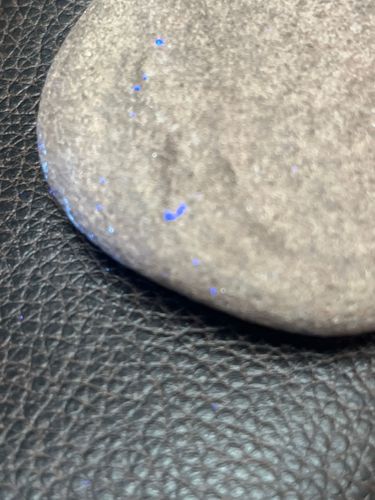Mold or Fungi (not an insect)
Scientific Name: Not applicable (as the image shows mold or fungi, not an insect)
Order & Family: Fungi (Kingdom Fungi)
Size: Microscopic spores; visible colonies can range from a few millimeters to several centimeters or more depending on conditions.

Natural Habitat
Damp, organic material; can grow on various surfaces including porous materials like the stone shown, especially in humid conditions.
Diet & Feeding
Feeds on organic matter, breaking down dead plant and animal material. The blue specks suggest a type of mold that might be consuming nutrients from the surface it's on.
Behavior Patterns
Growth is influenced by moisture, temperature, and nutrient availability. Spore dispersal is common for reproduction. The blue coloration could be due to pigments produced by the mold, or it could be a reaction with the substrate.
Risks & Benefits
Risks: Can cause allergic reactions, respiratory problems, or skin irritation in sensitive individuals. Some molds produce mycotoxins which can be harmful. Can also damage materials it grows on. Benefits: Decomposers, playing a crucial role in nutrient cycling in ecosystems. Some fungi are used in medicine (e.g., penicillin) or food production (e.g., yeast, mushrooms), but this particular growth is likely undesirable.
Identified on: 9/11/2025